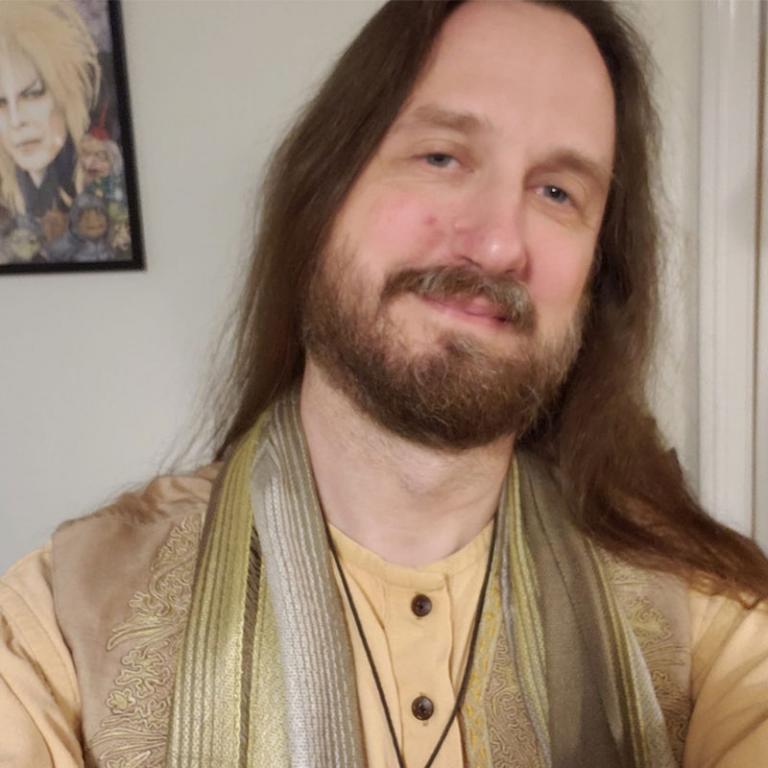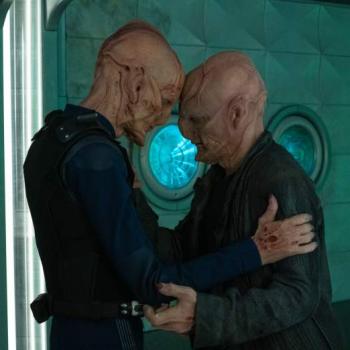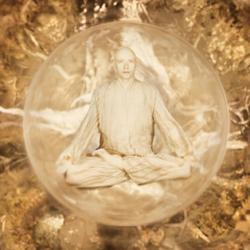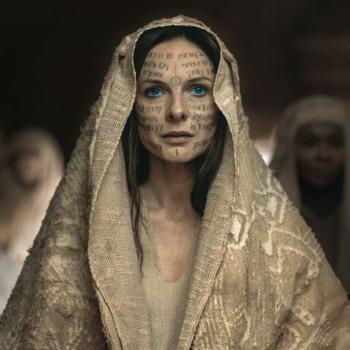As I was about to start my next blog post about a tv show, events today stopped me in my tracks and I was forced to change my topic. No, I’m not talking about the impeachment trial. What threw me was a very detailed set of tweets from actress Charisma Carpenter, beloved as Cordelia on “Buffy the Vampire Slayer” and “Angel,” outlining in specific detail the abuses she suffered under creator, writer and director, Joss Whedon.
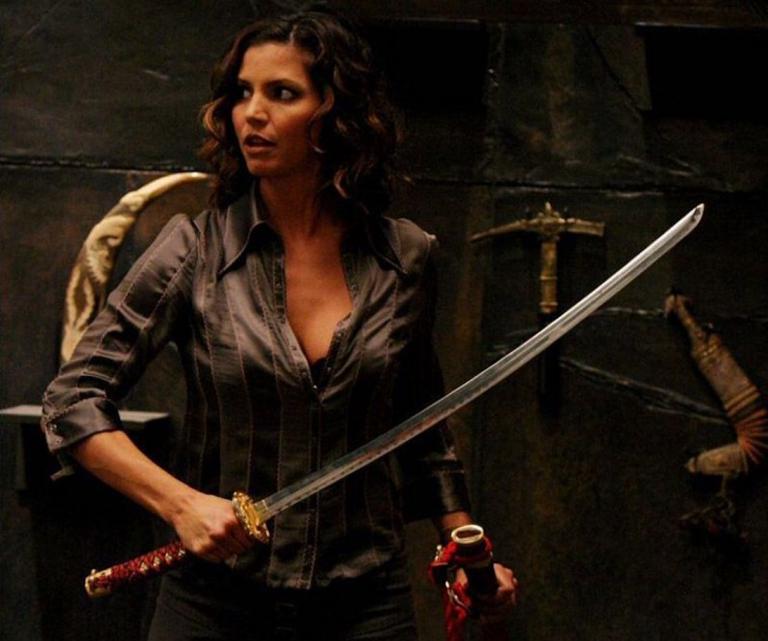
Whedon had been in the news lately for essentially being fired from what would have been his first original series in many years, “The Nevers,” on HBO. He had been the subject of an internal investigation by Warner Brothers for his conduct during the time he had stepped in to direct “Justice League,” after the original director Zach Snyder, stepped away due to his daughter’s suicide. This mostly came out of very public statements by “Cyborg” actor Ray Fisher, who complained about an abusive atmosphere created by Whedon and supported by producers Geoff Johns and Jon Berg.
The Fisher saga had many twists and turns, with various “he said/they said” vague allegations and defenses, along with conflicting stories about Fisher’s participation in the investigation itself. The only allegation that Whedon himself responded to was Fisher’s claim that Whedon’s call for color correction in post-production for Fisher, a Black actor, was motivated by racism. Whedon never responded to any of the other claims. Fisher later claimed that Whedon parting ways with HBO after he got his show going was one of the consequences of that investigation.

Now it turns out that Carpenter was part of that investigation as well. For Whedon fandom, the unfortunate story of how Carpenter was forced off the 4th season of “Angel” due to her pregnancy was well known, leading to one of the ickier “Buffyverse” stories, where Cordelia, who went from mean girl to St. Cordy throughout the character’s life on both shows, became evil and possessed, bedded Angel’s son and had his demonic love child.
Up until somewhat recently, that story stood out as an anomaly, and even Carpenter herself had said she and Whedon had made peace over it and that she’d work with him again.
But today, Carpenter’s extensive and detailed tweet reverses that position. And the floodgates opened. By the end of the actors such as Amber Benson (Tara), Michelle Trachtenberg (Dawn), Clare Kramer (Glory) and Buffy herself, Sarah Michelle Gellar, all weighed in and supported Carpenter and the allegations that the Buffy/Angel sets were toxic and abusive, due to Whedon’s behavior. And mainstream news sources (not just fan sites) started to cover the story.
I’ve Got a Theory
So I want to take a step back and provide some context for my particular take on this incident. If any of you have read my overly self-indulgent bio, you’ll know that I am one of those so-called “Buffy scholars.” I was part of the first wave of Buffy-obsessed academics back in the late 90s, in fact. When the first academic anthologies were being produced, I had an article on witchcraft and Buffy in the very first issue of “Slayage” the online, international journal of “Buffy Studies,” an actual peer-reviewed academic journal which continues today.
I taught a course on “Buffy the Vampire Slayer” at DePaul University for many years, which got some attention from the local media (although for some reason my name was never mentioned and I wasn’t interviewed, even though other professors were). I eventually expanded the course to be about all of Whedon’s shows, including “Angel,” “Firefly,” “Dollhouse,” “Dr. Horrible’s Sing-Along Blog,” and at the point where more young men were signing up for the course, the Marvel “Avengers” film.
I published several other scholarly essays in other anthologies, with one about teaching the course itself, and another one with a more fully developed analysis of how witchcraft functioned on the series, pulling from late 70s feminist theology.
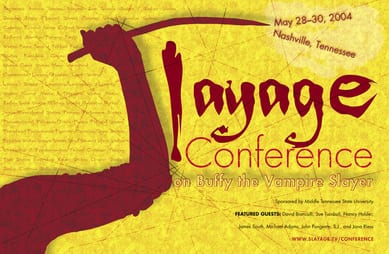
Continuing my association with the “Buffy/Whedon Studies” organization, I attended the very first “Slayage” conference in Nashville in 2004, which was an academic/geek’s dream complete with the incredibly awkward scene of scores of academics attempting to sing the entire Buffy musical around a piano with some sheet music. I further attended several other conferences in that realm over the years.
After the shows ended, I religiously followed the canonical comics that Whedon produced and sometimes wrote himself, purchasing every issue, and even including comics scholarship in my classes, just as the comics were also showing up in the Buffy academic discourse.
Suffice to say, I was deeply immersed in the world of Buffy scholarship.
I’m Under Your Spell
At the outset of “Buffy Studies,” there was unsurprisingly a certain amount of overly eager fandom and hero worship. While there were definitely plenty of critical works being produced that questioned all kinds of aspects of the shows, especially tackling the perennial question “Is Buffy a feminist text,” a decent majority of the work was celebratory. When the show was still on the air, most scholars had never encountered entertainment that so aligned with their interests and values.
“Twin Peaks,” “Star Trek,” and “The X-Files,” among other genre properties had received a certain amount of attention from scholars. But the wave of Buffy scholarship was unprecedented. I’d have to look up the actual number, but I’d venture to say hundreds of academic texts have been produced about the shows and thousands of individual essays, masters’ theses, and doctoral dissertations have all centered around Whedon’s works.
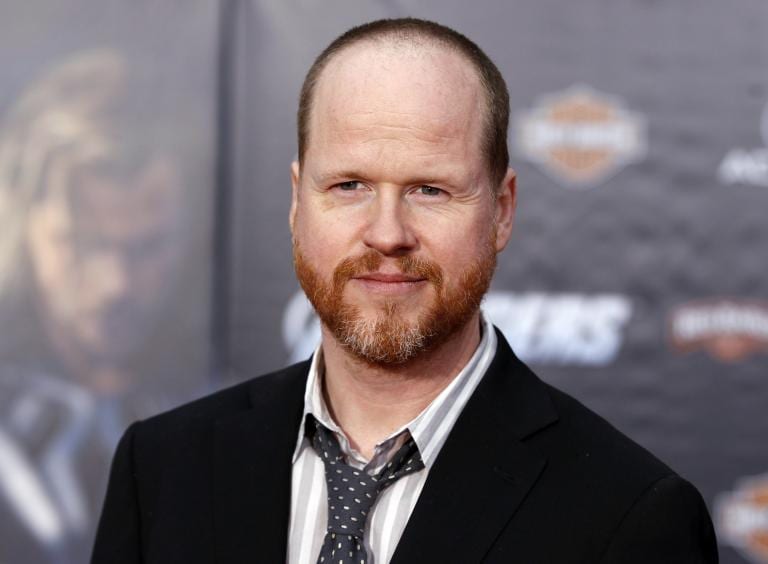
Why? So many of us were enamored with the (at the time) unique meta qualities of the show, that its presentation of female characters and women’s stories was so exciting and unprecedented and its gender politics were intelligent, savvy and well-considered on the whole. Some of that still holds up, but those of us longing for such clever discourse in our television then were thirsty, indeed. And the bar during the late 90s/early 00’s was depressingly low.
And a lot of that was based on the persona that Whedon created, through interviews and his own writings. Joss (and so many of us often used his first name because we felt so close to him) presented himself with as much smarts and cleverness as his characters, often appearing humble and self-deprecating, but also passionate about his mission to subvert genre expectations, especially around women.
The legacy of what Whedon built, with “Buffy” and other shows, cannot be underestimated. Still considered the gold standard of genre television, its influence is still strong today. Take for instance, the number of times “Lovecraft Country” writer Shannon Houston mentioned “Buffy” as an influence in that program’s accompanying podcast, just as showrunner Misha Green has noted it.
Standing in the Way
But it was Whedon’s reputation as an unapologetic male feminist, speaking for his late mother’s organization “Equality Now,” introduced by Meryl Streep herself, that stood tall in so many people’s estimation. In a series of social media posts, partially as promotion for his screenplay for Buffy alum Drew Goddard’s horror/satire “Cabin in the Woods,” Whedon criticized the torture porn genre and spoke out about honor killings.
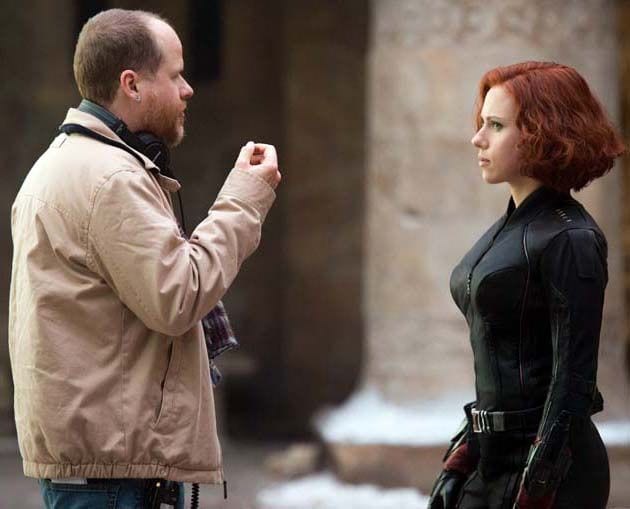
And after Whedon directed the Marvel movie “The Avengers” in 2012, one of the highest grossing films of all time, his star was on the rise. His sequel “Avengers: The Age of Ultron,” was less successful and was particularly dragged because of controversy over his treatment of the “Black Widow” character (and check out one of the subtitles in the article I linked: “Joss Whedon is an outspoken feminist — but his work doesn’t always reflect it”). This certainly was not the first time Whedon’s feminism was questioned, but after “Age of Ultron,” the shine had definitely diminished.
But his legend continued. In 2017, Entertainment Weekly did a series of reunion shoots with all the original “Buffy” and “Angel” casts. Even though there was certainly tabloid history of tensions between some of the actors, or between Whedon and some of the actors, in public everyone dutifully played their roles of honoring the historic nature of their participation in these iconic shows and noted the strong camaraderie the cast felt for each other.
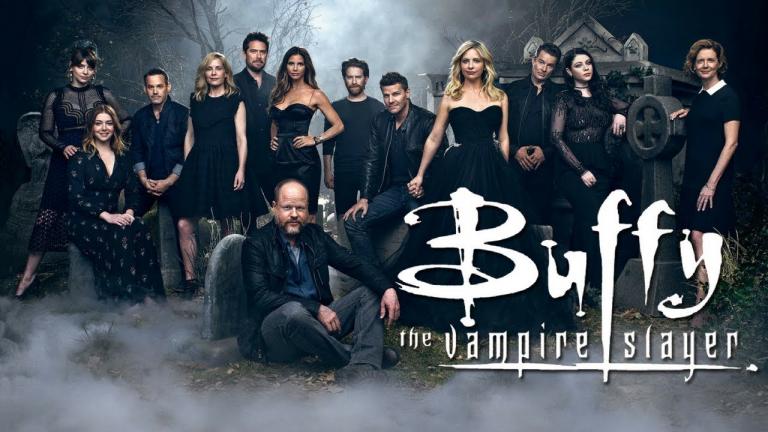
And while it was known that the “Buffy” set was a bit more fraught, with stories like this one about the stunt coordinators (another story that had been public for a while but received renewed attention over the summer after the “Justice League” controversy), this was heavily contrasted by the love fest almost always described as the experience of shooting “Firefly.”
For fans, as well as for the actors, the short lived space western stood as one of the great tragic stories of modern entertainment, in its cruel, early cancellation. In interviews, convention reunions and DVD extras, the cast and Whedon himself often spoke of how the cancellation of “Firefly” was a deep hurt because of how close they had all become, and what a miracle it was to reunite to make the “Serenity” film in 2005.
Thank God I’ll Never Tell
After “Age of Ultron,” the shine further came off the Whedon statue when his former wife, Kai Cole, publicly outed Whedon as an abuser and philanderer, calling him a hypocrite for preaching feminist ideals.
As the investigation over Whedon’s conduct on the “Justice League” set developed. more stories came out about the man behind the scenes, such as this one from James Marsters (“Spike”) who recounted Whedon physically attacking him over, of all things, the popularity of the Spike character.
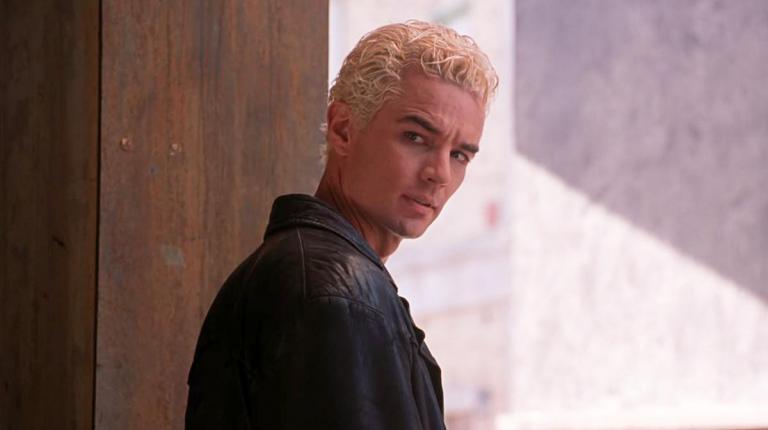
With Charisma Carpenter’s decision to come forward with full details over her experiences that she had only hinted at previously, we have an even clearer picture of Whedon’s character, after so many years. I won’t recount the full story here, but read it for yourself. Carpenter begins her message saying that “for twenty years, I held my tongue…”
Immediately, other “Buffy” actors chimed in, including Michelle Trachtenberg, who was 15 when she was first on the show. Trachtenberg (“Dawn”) mentions Whedon’s “very Not appropriate behavior,” and later ominously tweeting, “We know what he did. Behind. The. Scenes.”

I suspect other Buffy writers, actors and directors will emerge with their own viewpoints in the days ahead. Some, like James Leary, the actor who played the late series gay demon Clem, are simply showing support for those who have spoken out.
UPDATE: additionally, cast members Anthony Stewart Head (Giles), Emma Caulfield (Anya), Eliza Dushku (Faith), and James Marsters (Spike), have all come out in support of the women who have made statements regarding Whedon’s behavior and his toxic set. “Buffy” Writer Marti Noxon and “Firefly” writer Jose Molina further noted the problems of working with Whedon, with Molina telling a story of how Whedon bragged about making a writer, a woman, cry in the writer’s room. So far, no statements from Carpenter’s fellow actors or any writers and producers on “Angel,” where the incidents she reported happened. And no response from Whedon himself.
Seemingly, more complicated than yet another “Me Too” story, all of this leaves Buffy fans, scholars, and fans of popular occulture in general, in a precarious position.
Life’s A Show…
Here again, we are left with the age old question, can we separate the art from the artist? We’ve had this discussion about everyone from Elvis Presley to Roman Polanski and of course, Woody Allen. I suspect the line is different for everyone. In various social media conversations, I’ve seen people just throw their hands up and say, well Hollywood is just messed up and we shouldn’t be surprised. Or those who say, well at least he’s no Weinstein, as if full on rape is the only line.
But yes, we need to rethink these shows. Again, more recent scholarship has noted how certain things hold up from the late 90s and certain things don’t. Personally, one of the best examples I always think of the “progressive for then” argument is the treatment of Willow as a queer character.
“Buffy” broke new ground by showing the first lesbian sex scene on a major broadcast network, but how the show conceived of Willow as suddenly gay, after being thoroughly in love with Oz, instead of tackling the nuance of her possibly being bisexual (lesbians were ok, but audiences couldn’t handle bisexuals, apparently). And of course, the “bury your gays” trope was in full swing with the still painful killing off of Tara (Amber Benson) through arbitrary gun violence.
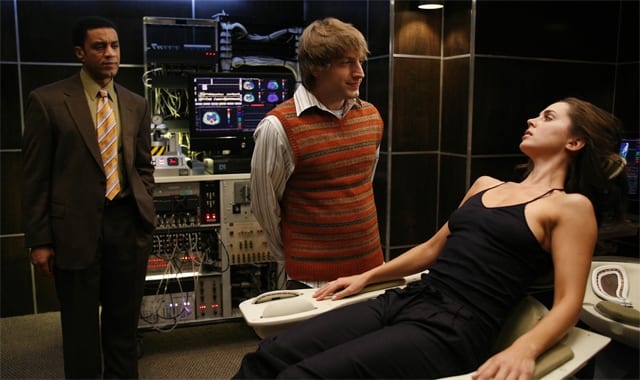
And of course, if you want to talk about “Dollhouse,” which arrived a full six years later, that’s a whole other level. Seemingly critiquing some of the same ideas that “Buffy” introduced, “Dollhouse” was a thoroughly complex and nuanced meta self-implication of men in power, the women who carry their water, and the women and men they control, and thus, the ultimate controller, Whedon himself. With characters like “Topher,” it was almost as if Whedon used the show as a kind of confessional.
With “Dollhouse,” audiences were left to deal with their discomfort rooting for heroines who are basically programmed to believe they have free will, all while being essentially enslaved. I still think “Dollhouse” was Whedon’s masterpiece and deserves continued viewing and revisiting.
For some, the solution seems to be to focus on Whedon’s productions as collaborations, noting the contributions of writers like Marti Noxon or Jane Espenson, who were often under-credited and under appreciated for the role they played in the story direction of the series.
We can also acknowledge that stories have their own lives and can exist beyond the limitations of their creators. Here I am again thinking of “Lovecraft Country” where Atticus Freeman defends his love for the “John Carter of Mars” books in the opening episode, saying “Stories are like people. Loving them doesn’t make them perfect. You just try and cherish them and overlook their flaws.” But when challenged, Tic acknowledges that those flaws are still there.
Let Me Rest in Peace
To go further with the “Lovecraft Country” connection, we definitely have something to learn from the ways that H.P. Lovecraft has been reframed by contemporary authors and showrunners. As I’ve discussed before, the acknowledgement of Lovecraft’s ugly racism in recent years, which has included removing his image from the World Fantasy Award, is a crucial step in the evolution of media and literary studies.
Given the fact that so much of our fantasy, science fiction, horror, and superhero narratives (including “Buffy” itself, which had a certain Lovecraftian nature to its mythos) owe a debt to Lovecraft and his world-building, it’s impossible to just delete his influence. We can play in his sandbox, possibly even use his tools, but we don’t have to build ultimately racist castles. As Buffy characters might say, I lost that metaphor a bit at the end, but I think you get my meaning.
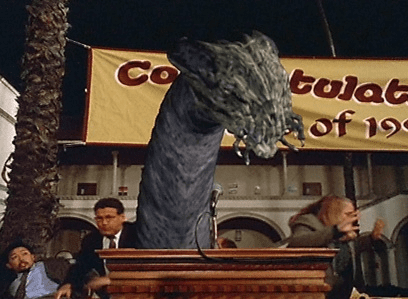
Right now, discussions are already going on with the Whedon Studies Association, particularly on its Facebook page, about finally changing the name. The organization used to be Buffy Studies, but was expanded to Whedon to encompass the other shows. I feel strongly ambivalent (as in strong feelings both ways, not indifferent) about such pursuits.
As much as my academic history and scholarship is rooted in “Buffy Studies,” I’m not entirely convinced we need a delineated academic field at all. Perhaps “Whedon Studies” had its day and has run its course. But another part of me thinks that it’s a worthwhile challenge to address the complexity and the problems around the work and the man. It’s time for “Whedon Studies” to grow up. Maybe part of that growing up is embracing the death of the author and moving away from auteur theory, and the study of a man himself. Cults of personality, as we’ve seen over the last few years, rarely end well.
Where Do We Go From Here?
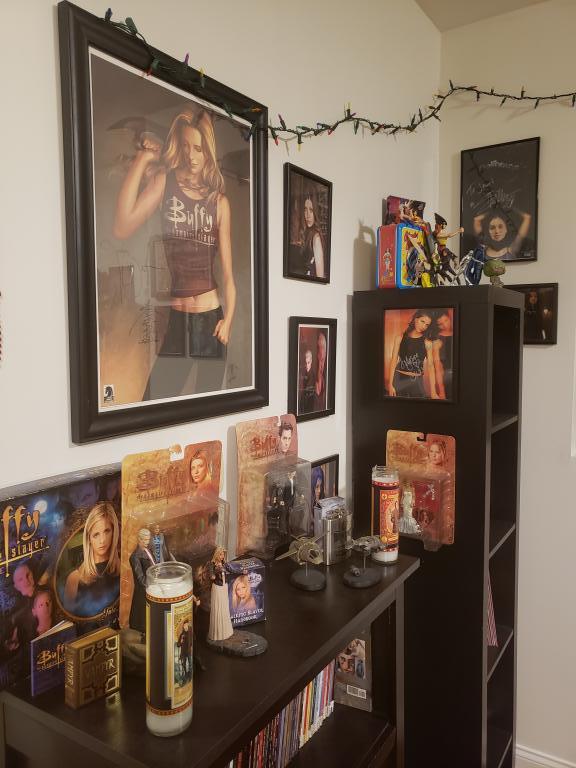
I have my Buffy shrine at home, filled with pictures and toys autographed by Whedonverse actors, and a prominently framed photo of cover art from the “Buffy the Vampire Slayer” Dark Horse comic book. While that drawing actually has Joss Whedon’s signature, it’s the one signature in the collection that I didn’t obtain myself. So I never did meet the man.
Instead, I honor Buffy as an icon, as an archetype and heroine. And I honor the talented actors that brought these characters to life, despite the fact that they had to suffer through abuse to achieve their great heights. I will keep that shrine to honor those actors (and proudly display my Charisma Carpenter autograph) and the ways that these characters and stories have inspired me and the people close to me, particularly my daughter (who one day, I’ll finally convince to watch past season 3 with me).
But ultimately I think these incidents, part of the supposed “cancel culture” (a term I despise), serve to teach us to acknowledge the complexity of the creations that inspire us. “Harry Potter” fans who don’t approve of author JK Rowling’s awful forays into transphobia have had to deal with this very thing. But unlike those books that were the sole vision of a singular author, and despite the worlds being Whedon’s vision, his works were only possible through collaboration.
And there are certainly discussions about how to take further steps in the future, like this great piece by fellow Buffy writer Marti Noxon.
These incidents remind us that actual humans produced these things. And these humans might have gone through things we could never imagine in order to bring these creations to our screens. Nothing can take away the millions of lives affected by “Buffy the Vampire Slayer” and the movements it spawned.
But maybe we now can approach our fandom with clearer eyes.
Epilogue: As the fan community has started to respond to the situation, I’m struck by how emotional I’m personally feeling. I’ve referenced the Buffy musical throughout this piece to be somewhat clever, but I realized later that this was a subconscious response that contained the emotions I was feeling. It’s like we’re all stuck in season 6. It sucks. If you’re a fan you’ll understand what I’m saying here. I hope we can all find our own ways to determine how to process this and how to regard what has been so important to so many of us. The hardest thing in the world is to live in it, indeed.


